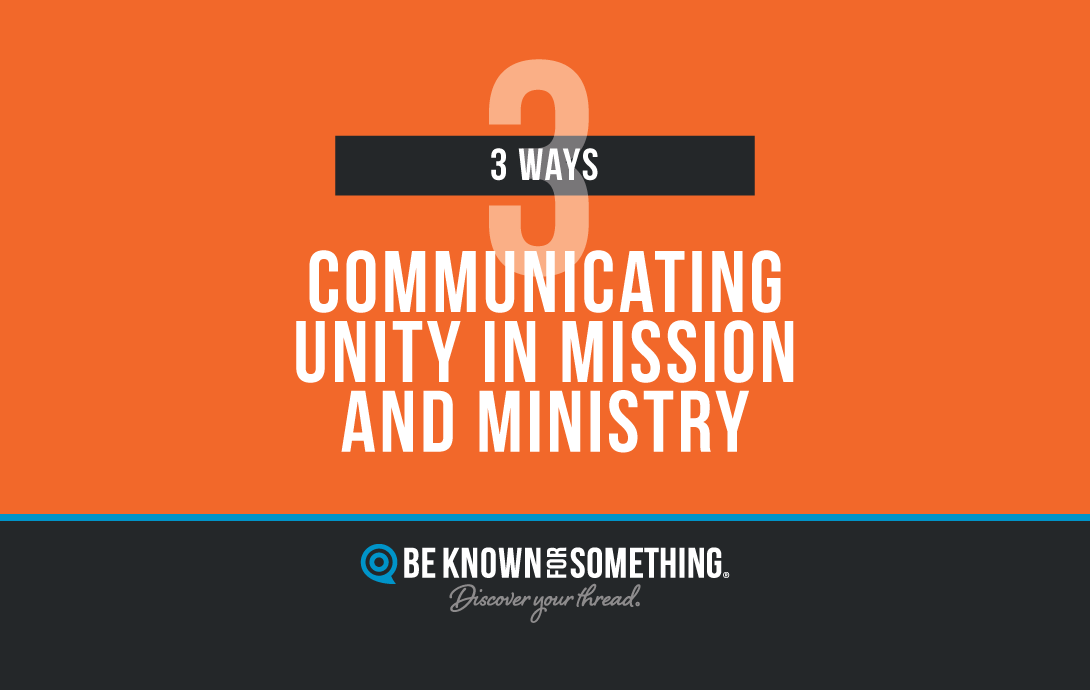Communicating Unity in Mission and Ministry

“I wish we could all be on the same page!” is a message many Pastors hear. Perhaps they mean, “Aren’t we on mission together?” From a leader’s perspective, you may believe you are; but in reality, by the way you communicate unity, it can feel like ministry silos abound. Each ministry doing their own thing.
Let’s get on the same page. Here are 3 ways to communicate unity in mission and ministry:
- Concentrate on sameness not differences. Sure, you have different demographic groups and ministries in your church. With different preferences too. Be careful you don’t divide by accentuating differences (unless there’s a clear Biblical standard that needs to be taught). Always seek a common ground. Look at your greater community (your congregation comes from it) and define 1 or 2 personas that live near you. Who, stereotypically, are you trying to reach? Concentrate on their needs, concerns, and goals. Seek those that run across all (or most) age groups. It’s usually best to broaden the mission so it encompasses most of your community. For example, you may have “homelessness” as a community need. It’s probably better to focus on “discovering a community” to capture the attention of more people. There needs to be one umbrella solution that gets your entire audience’s attention.
- Think of a simple thread to communicate the benefits. Now comes the difficult part. Many mission statements feel too long and are difficult to use in regular communication. Or remember! Most brands are known for something. It’s usually a simple 3- to 5-word tagline or thread that defines the benefit and insinuates the audience’s need. Most importantly, it’s easy to use in “regular” conversation. It’s probably not going to be a theology statement. Instead, it’ll be a solution statement. For example: “Finding a better way” or “Discover community easily”. Why is this so difficult? You need to ensure, in those few words, it speaks to all your ministry groups (perhaps differently) and is unique. So, your defined thread isn’t confused with another church or organization. You should commit to using it for at least 5 years (in order for people to know you for that desired solution). True unity!
- Be consistent and constant on all channels. With your simple, unique thread that gets most people’s attention in and outside of your building, you need to start using it! Communicating unity means that you lead the discussion using your umbrella concept foremost; and then, once they’re listening, give details that make that particular ministry unique. Most people forget the details while remembering the overarching defining mission thread your church is all about. For example: as a stage announcement, “Are you truly looking for community in a world that doesn’t seem to offer it? Well, we do. We call them small groups. And we’d love for you to find a community who’ll become friends while you all focus on God’s Word.” Or, for a kid’s audience, you could say, “We want you to find a community of friends to play with, sing with, and learn God’s Word with”. The key is consistency over time, so all ministries become known for something that they need! Your whole team must be communicating unity!

Want 25 Game-Changing Resolutions?
Related Posts

True thankfulness: communicating gratitude that connects
We’re just a couple weeks away from Thanksgiving. Though you might not know it by the jingling commercials already flooding

AI Prompts Every Church Communicator Should Be Using
Artificial Intelligence (AI) isn’t replacing church communicators, it’s simply helping the good ones work smarter. Tools like ChatGPT (and similar)

Church Growth Strategy: Clarity That Connects
Most churches pray for growth but overlook one of their most effective tools: a clear church growth strategy built on

